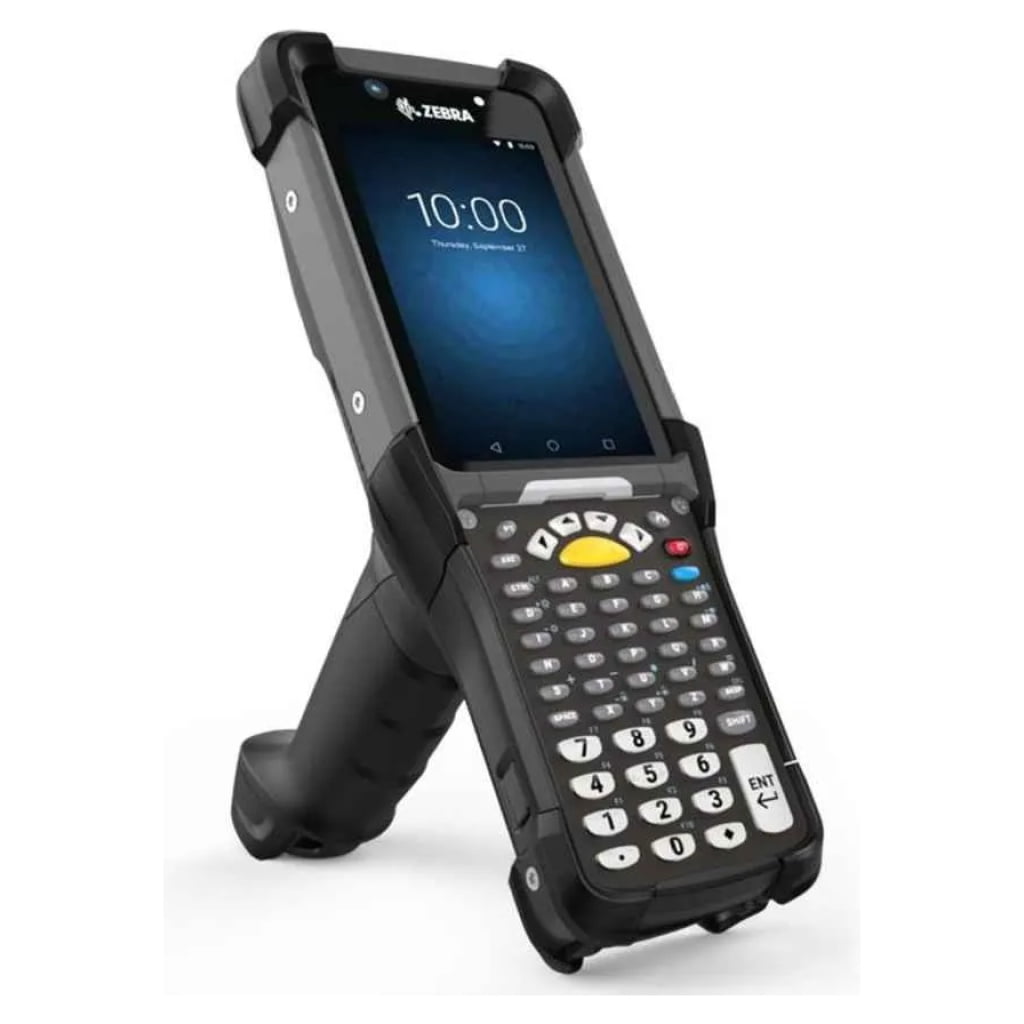Ever wondered how the cost of Zebra compares to Honeywell in the bustling world of barcode scanners and mobile computing? In a market where every penny counts, making an informed decision between these two giants can significantly impact your business’s operational efficiency and budget. This post dives deep into a comprehensive cost comparison of Zebra and Honeywell products, shedding light on which brand offers more bang for your buck. Whether you’re outfitting a small retail operation or scaling up a vast warehouse, understanding the nuances in pricing between these leading manufacturers could be the key to unlocking substantial savings without compromising on quality or performance. Let’s unravel the numbers together.
Key Takeaways
- The legacy of Zebra and Honeywell highlights their long-standing presence in the market, making them reliable choices for barcode scanners and printers. Understanding their history can help you appreciate the quality and innovation behind each brand.
- When considering a purchase, explore the product range overview to find a model that best fits your specific needs, whether for small-scale operations or large enterprise solutions.
- Quality and features for the price are crucial; both Zebra and Honeywell offer competitive options, but your selection should be based on which brand provides the essential features you need within your budget.
- The cost comparison analysis reveals that while initial prices may vary, the total cost of ownership, including maintenance and supplies, should also be considered to make an informed decision.
- The value of refurbished models can be significant for businesses looking to save money without compromising on quality, especially for entry-level and top-range models where the cost difference can be more pronounced.
- Finally, when making the right choice, it’s important to weigh the pros and cons of each option within the context of your operational needs and budget constraints. Remember, the best choice is one that offers reliability, meets your requirements, and provides value for money over time.

The Legacy of Zebra and Honeywell
Historical journey
Zebra Technologies and Honeywell International have long been at the forefront of the barcode and technology sector. Zebra, founded in 1969, initially focused on high-speed electromechanical products but swiftly pivoted to specialize in printing technologies. This shift set the stage for their dominance in barcode printing and scanning solutions. Honeywell, with a broader inception dating back to 1906, expanded into automatic identification and data capture (AIDC) technologies by acquiring Hand Held Products, Inc., in 2007. This move marked Honeywell’s strategic entry into the barcode scanning market.
Both companies have navigated through technological advancements and evolving industry demands with remarkable agility. Zebra made significant strides by launching its first barcode printer in the early 1980s, aligning with the burgeoning need for asset tracking across retail and healthcare sectors. Similarly, Honeywell’s acquisition strategy bolstered its product offerings, including advanced scanning and mobile computing devices, catering to a wide array of industrial applications.
Innovations over time
The innovation timelines of Zebra and Honeywell reveal a series of groundbreaking products that have significantly influenced efficiency and productivity across various sectors. Zebra introduced the first thermal printer for on-demand barcode labeling in 1986, revolutionizing how businesses manage inventory and track assets. Its subsequent launches, including RFID printers and real-time location solutions, underscored Zebra’s commitment to pushing boundaries in AIDC technology.
Honeywell, on its part, has consistently emphasized enhancing user experience through technology. Its Dolphin series of handheld computers combined rugged design with advanced data collection capabilities, making them indispensable in logistics and field service operations. Moreover, Honeywell’s focus on voice-directed work solutions has streamlined workflows in warehouses globally.
Research and development (R&D) have been pivotal for both companies in maintaining their competitive edge. Zebra’s investments in R&D have led to smarter, more connected devices that integrate seamlessly into existing systems. Meanwhile, Honeywell’s dedication to innovation is evident in its software solutions that complement physical products, offering customers a holistic approach to data management.
Product Range Overview
Barcode scanners
Zebra and Honeywell both offer a wide range of barcode scanners, designed to meet the varied needs of businesses. Zebra’s portfolio stands out for its robust performance and reliability, particularly in high-volume scanning environments. Their models are engineered to withstand intensive use, making them ideal for retail, warehousing, and logistics operations where efficiency is key.
Honeywell’s scanners also deliver on performance, with an emphasis on versatility for both high-volume and occasional use settings. They feature ergonomic designs that reduce user fatigue, a crucial factor in environments like healthcare and small retail outlets.
A unique aspect of Zebra’s offerings includes their proprietary PRZM Intelligent Imaging technology, enhancing barcode capture speed and accuracy. Honeywell counters with its FlexRange technology, allowing users to scan barcodes from near or far distances with equal precision. These innovations highlight each brand’s commitment to optimizing operational workflows through advanced scanning solutions.

Other technologies
Beyond barcode scanners, Zebra and Honeywell have developed cutting-edge non-scanning technologies such as RFID systems and mobile computing devices. Zebra’s RFID solutions offer unparalleled asset tracking capabilities, seamlessly integrating with existing systems to provide real-time visibility across supply chains. Their mobile computers combine rugged design with powerful computing capabilities, supporting workers in even the most challenging environments.
Honeywell excels in creating integrated solutions that blend their scanning and mobile computing technologies with software applications. This holistic approach enables businesses to achieve greater operational efficiency and data accuracy.
Both companies’ technologies play a pivotal role in crafting comprehensive business solutions that enhance productivity and streamline workflows.
Sector applications
Zebra and Honeywell products find extensive application across various key sectors including retail, healthcare, and logistics. In retail, Zebra’s scanners and mobile computers support inventory management and customer service enhancements. Their sector-specific solutions include price checking kiosks and self-checkout systems tailored to improve the shopping experience.
Honeywell’s strength lies in healthcare, offering scanners that feature disinfectant-ready housings suitable for patient care environments. Their logistics solutions optimize warehouse operations through advanced data capture and tracking technologies.
Both brands have demonstrated their ability to meet the specific needs of these sectors through innovative products and customised solutions. This adaptability has cemented their positions as leaders in the field of enterprise mobility solutions.
Quality and Features for the Price
Memory and connectivity
Zebra devices typically boast robust memory capacities, facilitating efficient data storage and retrieval. Their connectivity options, including Wi-Fi and Bluetooth, are comprehensive. This ensures seamless operation across various environments. Honeywell devices also offer ample memory and diverse connectivity solutions, though Zebra often leads with slightly more advanced or additional options.
The importance of these features cannot be overstated. They are crucial for uninterrupted data management and operational continuity. Both brands provide proprietary connectivity solutions, but Zebra’s Link-OS environment stands out. It offers unique tools for device management and integration, enhancing the user experience.
Display capabilities
When it comes to display quality, both Zebra and Honeywell prioritize readability under diverse conditions. Zebra’s screens are known for their high resolution and intuitive interfaces, making them user-friendly even in challenging outdoor or low-light scenarios. Honeywell’s devices also feature clear displays but may lag slightly behind in terms of user interface design.
Screen durability is another critical consideration. Both brands produce devices with screens resistant to impacts and scratches, essential for longevity in harsh working conditions. However, Zebra tends to edge out with displays designed for extra resilience, ensuring optimal performance over time.
Media handling
Zebra printers excel in media handling capabilities, offering versatile solutions for label, receipt, and card printing. They support a wide range of media sizes and types, which is pivotal for businesses requiring flexibility in their operations. Honeywell printers match this versatility but often shine with their innovative media loading features that minimize downtime.
Both brands have made strides in improving efficiency through better media handling. For instance, Zebra’s OpenACCESS™ design simplifies media loading, reducing interruptions during high-volume printing tasks. Honeywell counters with smart printing technologies that automate calibration and settings adjustment based on the inserted media type.
Cost Comparison Analysis
Initial purchase price
The upfront cost is a crucial factor when choosing between Zebra and Honeywell devices. Zebra’s lineup, renowned for its rugged durability, often comes with a higher initial price tag. This reflects their advanced features and robust build quality, aimed at sectors like logistics and manufacturing. In contrast, Honeywell devices cater to a broad market spectrum, including entry-level models that are more budget-friendly.
Factors such as device specifications and intended use play significant roles in determining the price. Higher-end models from both brands offer superior performance but at increased costs. To ease the burden of upfront expenses, both companies provide financing and leasing options, making their products accessible to businesses of all sizes.
Add-ons and extras
Both Zebra and Honeywell offer an array of add-ons and accessories designed to enhance operational efficiency and protect the investment in the device. These range from protective cases and mounts to extended batteries and charging solutions.
Investing in these extras can significantly impact operational efficiency by reducing downtime due to damage or battery failure. While the initial outlay for add-ons can be substantial, they offer long-term savings by extending the lifespan of the device. Comparatively, Zebra’s accessories are often seen as more tailored to specific industry needs, potentially offering better value for certain businesses.
Total cost of ownership
Looking beyond the initial purchase price, the total cost of ownership (TCO) for Zebra and Honeywell devices includes maintenance, software updates, and consumables over the device’s life cycle. Both brands have robust warranty and support services that mitigate unforeseen expenses, yet differences exist in their coverage details.
Zebra tends to have a higher TCO primarily due to its premium pricing strategy but compensates with comprehensive support services and durability that reduces replacement frequency. Honeywell offers competitive TCO advantages through cost-effective pricing and efficient maintenance solutions.
To reduce TCO over time, both companies have introduced programmes aimed at streamlining device management and maintenance. These include trade-in schemes, extended warranties, and subscription-based software updates which ensure devices remain operational with current technologies without large lump-sum payments.
The Value of Refurbished Models
Benefits of refurbished
Refurbished Zebra and Honeywell devices offer significant cost savings. They are much cheaper than their brand-new counterparts. This makes them an attractive option for businesses looking to stretch their budget further.
The environmental impact of choosing refurbished over new is also noteworthy. It reduces waste and the demand for raw materials. This contributes to sustainability efforts.
Both Zebra and Honeywell have rigorous quality assurance processes for their refurbished units. Customers can expect reliable performance comparable to new devices. Most refurbished products come with warranties, providing peace of mind to buyers.
When comparing the two brands, it’s clear that both offer a wide range of refurbished options. However, the availability can vary based on demand and recent releases.
Zebra vs Honeywell options
Zebra and Honeywell both have extensive product lines that cater to various operational needs. For example, Zebra’s industrial printers and mobile computers are highly regarded in retail and warehousing. On the other hand, Honeywell is known for its rugged scanners and handheld computers, often used in logistics and manufacturing.
A side-by-side comparison reveals differences in design philosophy and technological focus. Zebra tends to prioritise user-friendly interfaces and robust software support. Honeywell focuses on durability and long-term reliability.
Each brand has unique selling propositions (USPs) that make them stand out. Zebra offers advanced connectivity features across its refurbished models, enhancing workflow efficiency. Honeywell’s refurbished units often include patented technologies designed to withstand harsh environments.
Choosing between Zebra and Honeywell depends on specific industry requirements and operational needs. For instance, businesses that value high-speed data processing might lean towards Zebra’s offerings. Those in need of devices that can endure extreme conditions might prefer Honeywell.
Entry-Level Models Showdown
Affordable options
Zebra and Honeywell both offer cost-effective models for businesses looking to integrate barcode technology without breaking the bank. The Zebra GC420d and the Honeywell PC42t stand out as budget-friendly solutions. Both printers provide reliable performance for basic barcode printing needs but have their limitations, such as slower print speeds and lower resolution output compared to their higher-end counterparts.
Choosing a more affordable option often means weighing the trade-offs between price, performance, and durability. For instance, while these models are easier on the wallet, they may not withstand heavy-duty use or offer the fastest printing capabilities. However, for small businesses or those with moderate printing needs, these limitations might not pose a significant issue.
The Zebra GC420d shines in its ease of use and compact design, making it an excellent choice for spaces with limited room. On the other hand, the Honeywell PC42t offers exceptional value by supporting a wide range of media types and sizes, providing flexibility without compromising on essential features.
Best for beginners
For businesses new to barcode technology, selecting user-friendly products is crucial. The Zebra ZD220 and Honeywell EDA50 are highly recommended for their simplicity and ease of integration into existing systems. These models are designed with beginners in mind, featuring intuitive interfaces and minimal setup requirements.
Support and training resources are vital for maximising investment in new technology. Both Zebra and Honeywell excel in offering comprehensive online resources, customer support services, and training modules to help users get up to speed quickly. This support is invaluable for businesses looking to leverage barcode technology effectively without extensive prior experience.
Plug-and-play models like the Zebra ZD220 can be particularly beneficial for beginners. They require minimal configuration before use, allowing businesses to start benefiting from their investment almost immediately. Similarly, the Honeywell EDA50 impresses with its user-friendly design and versatility, making it suitable for various applications across retail and logistics sectors.
Top-Range Models Comparison
Premium features
High-end models from Zebra and Honeywell boast cutting-edge technologies. Zebra’s premium scanners and printers often feature advanced connectivity options, such as Wi-Fi 6 and Bluetooth 5.0, enabling seamless integration into existing networks. Their devices come equipped with long-life batteries and rugged designs, ensuring durability in harsh environments.
Honeywell, on the other hand, integrates proprietary software solutions like Operational Intelligence to enhance device management and productivity. Their premium products also include smart battery technology, which extends the device’s life span.
When comparing these offerings, it becomes evident that Zebra focuses on hardware resilience and connectivity for demanding settings. Honeywell prioritises software integration and battery efficiency, catering to businesses looking for long-term operational savings. For advanced users requiring robust performance and minimal downtime, Zebra might edge out slightly due to its durable design. However, Honeywell offers better value for those prioritising smart energy management and software tools.
Best industry fit
Zebra’s robust design and superior connectivity make its products a perfect match for logistics and manufacturing sectors. Companies in these industries require devices that withstand tough conditions and integrate smoothly with various systems. Testimonials from large logistics companies highlight how Zebra’s scanners have streamlined their operations, reducing package processing times significantly.
Honeywell’s devices find their best fit within retail and healthcare sectors. Their scanners offer enhanced data capture capabilities ideal for inventory management in retail environments. In healthcare, Honeywell’s disinfectant-ready housings and patient data security features stand out. Partnerships with leading software providers enable custom solutions that further enhance patient care efficiency.
A notable case is a large retail chain that implemented Honeywell’s scanning solutions across its stores nationwide, resulting in improved checkout speeds and customer satisfaction levels. Similarly, a hospital network utilising Honeywell devices reported enhanced patient record accuracy and faster admissions processes.
Both brands have carved niches where their specific strengths—be it rugged design or software integration—offer the most value. While Zebra shines in environments demanding physical durability and seamless connectivity, Honeywell excels where sophisticated software solutions drive efficiency gains.
Making the Right Choice
Deciding factors
Businesses face a crucial decision when choosing between Zebra and Honeywell. Compatibility plays a key role in this choice. Devices that seamlessly integrate into existing systems reduce disruptions and save costs.
Scalability is another vital consideration. A solution that grows with your business avoids future expenditures on new systems. Look for options that can expand without significant overhauls.
Support services are essential for long-term satisfaction. Excellent customer service and technical support ensure issues are swiftly addressed, reducing downtime. Businesses must evaluate both current needs and future growth to make an informed decision. This approach ensures the chosen technology remains effective over time.
Future-proofing your choice
Selecting products from Zebra or Honeywell requires a forward-thinking strategy. Products should not only meet current needs but also adapt to future technological advancements.
tware updates are crucial for keeping devices relevant. Regular updates protect against security vulnerabilities and add new features, extending product life.
Modular designs offer flexibility, allowing components to be upgraded rather than replacing entire systems. This design principle supports sustainability and cost-efficiency.
Compatibility with emerging standards ensures devices can communicate with new technologies as they arise. This interoperability is vital for maintaining efficiency and leveraging future tech innovations.
Zebra and Honeywell have solid track records in adapting their product lines to incorporate new technologies. By comparing these histories, businesses can gauge which company is more likely to offer solutions that remain cutting-edge in the long term.
Summary
Navigating the complex terrain of Zebra and Honeywell products, you’ve explored their legacies, product ranges, and how they stack up in terms of quality, features, and cost. This journey has highlighted the importance of considering both new and refurbished models to find the best value for your specific needs. Whether you’re leaning towards an entry-level model or eyeing the top-range offerings, making an informed choice demands a thorough comparison. Your decision will not only impact your immediate budget but also the efficiency and productivity of your operations in the long run.
Armed with this knowledge, you’re now equipped to make a choice that aligns with your requirements and budget constraints. Remember, investing in the right technology is crucial for staying competitive in today’s fast-paced market. Don’t hesitate to delve deeper into each option or seek expert advice if needed. Your perfect match between Zebra and Honeywell awaits—make the leap today for a smarter tomorrow.
Frequently Asked Questions
How do Zebra and Honeywell compare in terms of cost?
Zebra and Honeywell products vary in price, with differences highlighted in our cost comparison analysis. Factors such as features, durability, and technology contribute to the overall cost, making some models more economical than others.
What product range do Zebra and Honeywell offer?
Both Zebra and Honeywell boast a wide range of products tailored for various industries, including retail, healthcare, and logistics. Their offerings span from entry-level to top-range models, catering to diverse business needs.
Are refurbished models from Zebra and Honeywell worth considering?
Yes, refurbished models from both brands offer significant value. They are thoroughly tested and certified, providing a cost-effective alternative without compromising on quality or performance.
How can I make the right choice between Zebra and Honeywell products?
Making the right choice involves understanding your specific needs, budget constraints, and desired features. Consider factors such as product range, cost-effectiveness of refurbished models, feature sets relative to price points across entry-level to top-range products before deciding.

Ulrik Maxen: Specialist in rugged computers and mobile scanners
Ulrik is an industry veteran with over two decades of expertise working with rugged computers and mobile barcode scanners. Brands include Panasonic, DELL, Getac, Zebra, and Honeywell/Intermec. He is known for his commitment to delivering products and solutions that increase operational efficiency. Dedicated to following new market trends and client satisfaction, Ulrik is a trusted advisor where rugged computers and mobile barcode scanners must be deployed.





